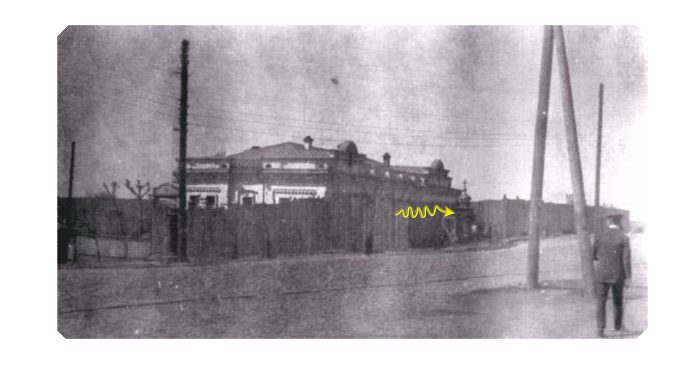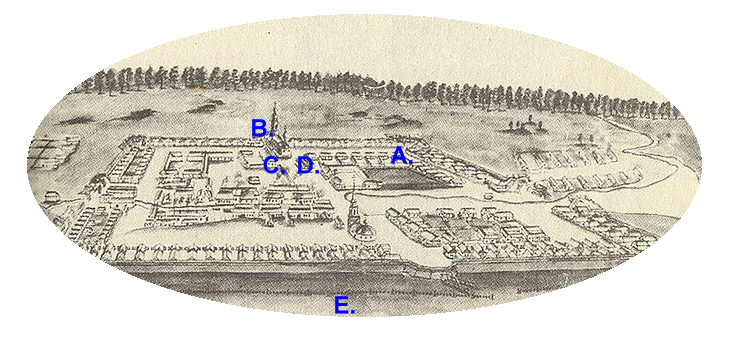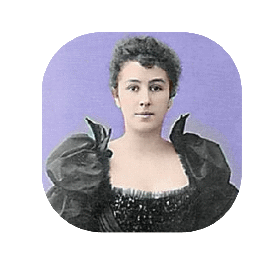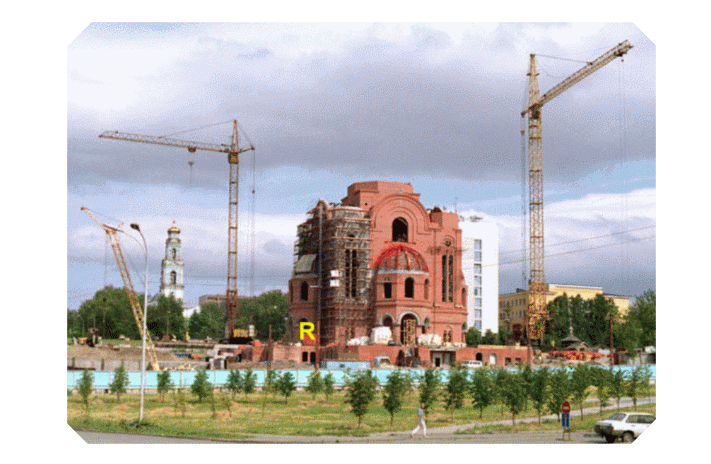More Ipatiev house miscellany.

1. This photo was taken from the roof of the house and is looking northeast. Several government buildings and a portion of the Rastorguev-Kharitonov palace can be seen. At least two open windows in the carriage house can also be seen. Directly below the chimneys were the twenty three stairs that led to the cellar area. In 1918, Ekaterinburg was primarily a mining and smelting town. At one time, most of the world's supply of platinum came from this area.
2. Early twentieth century lithograph of the public square area looking west, showing the Ipatiev house (in the lower left corner) and the Solomirsky house. My strong sense is that the smoke stack (yellow arrow) is of either the Verkh-Isetsky smelter or the Zlokazov smelter.
3. View looking, again, northeast, showing the vacant lot where the house once stood.
4. Hotel Amerika in recent years. Several floors have been added since 1918.
2. Early twentieth century lithograph of the public square area looking west, showing the Ipatiev house (in the lower left corner) and the Solomirsky house. My strong sense is that the smoke stack (yellow arrow) is of either the Verkh-Isetsky smelter or the Zlokazov smelter.
3. View looking, again, northeast, showing the vacant lot where the house once stood.
4. Hotel Amerika in recent years. Several floors have been added since 1918.
Click here for at least a tiny bit of information on the Solomirsky house.

Below, an eighteenth century lithograph of Ekaterinburg.
A. What would later become the Hotel Amerika.
B. Ascension Cathedral.
C. What would later become the Ipatiev house.
D. What would later become the Popov house.
E. Iset pond.
B. Ascension Cathedral.
C. What would later become the Ipatiev house.
D. What would later become the Popov house.
E. Iset pond.

Below, Mathilde Kschessinska. a famous ballerina of the 1890's. She was Nicholas's mistress before he married Alexandra. What strikes me about this is the classic "what if" question. What if Nicholas had actually married her? Certainly there would have been no Alexei, and hence no hemophilia and certainly no Grigori Efimovich Rasputin. My own sense, however, that such a union would not have affected the revolution per se, as those forces of change were too great.

Below, a photo of The Cathedral of the Blood during construction. The man in the white pants is walking down what was, in 1918, Yakova Street towards Voznesensky Lane. The bell tower of the Ascension Cathedral is shown in the rear. The actual massacre took place approximately below the letter "R".
